This blog explores the difference between mutable and immutable objects in Python.
Python is a powerful programming language with a wide range of applications in various industries. Understanding how to use mutable and immutable objects is essential for efficient and effective Python programming. In this guide, we will take a deep dive into mastering mutable and immutable objects in Python.
Mutable objects
In Python, an object is considered mutable if its value can be changed after it has been created. This means that any operation that modifies a mutable object will modify the original object itself. To put it simply, mutable objects are those that can be modified either in terms of state or contents after they have been created. The mutable objects that are present in python are lists, dictionaries and sets.

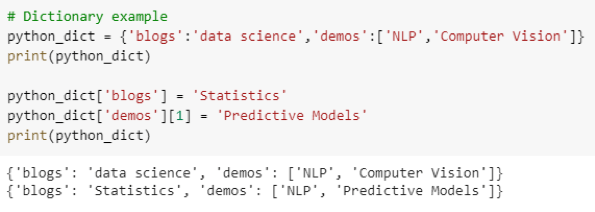
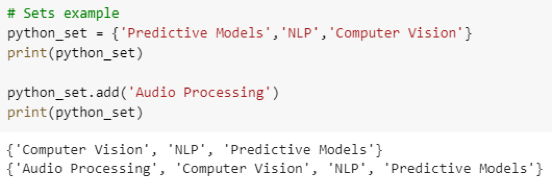
Advantages of mutable objects
- They can be modified in place, which can be more efficient than recreating an immutable object.
- They can be used for more complex and dynamic data structures, like lists and dictionaries.
Disadvantages of mutable objects
- They can be modified by another thread, which can lead to race conditions and other concurrency issues.
- They can’t be used as keys in a dictionary or elements in a set.
- They can be more difficult to reason about and debug because their state can change unexpectedly.
Want to start your EDA journey? Well you can always get yourself registered at Python for Data Science.
While mutable objects are a powerful feature of Python, they can also be tricky to work with, especially when dealing with multiple references to the same object. By following best practices and being mindful of the potential pitfalls of using mutable objects, you can write more efficient and reliable Python code.
Immutable objects
In Python, an object is considered immutable if its value cannot be changed after it has been created. This means that any operation that modifies an immutable object returns a new object with the modified value. In contrast to mutable objects, immutable objects are those whose state cannot be modified once they are created. Examples of immutable objects in Python include strings, tuples, and numbers.
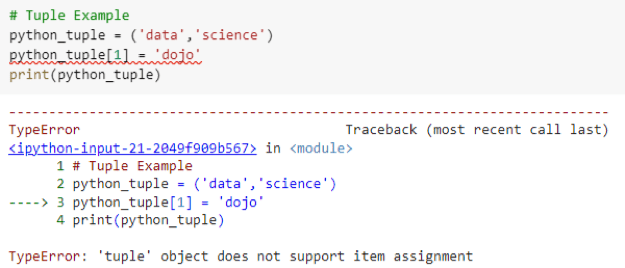
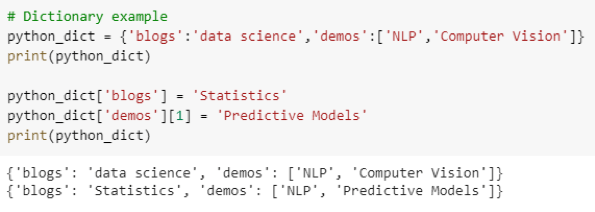
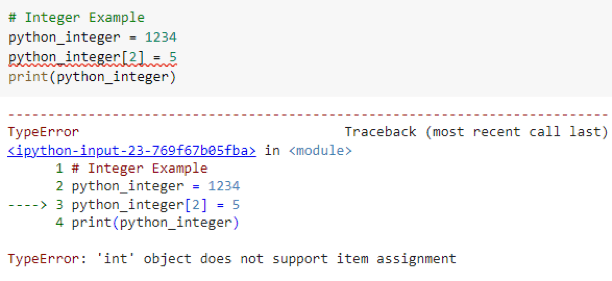
Advantages of immutable objects
- They are safer to use in a multi-threaded environment as they cannot be modified by another thread once created, thus reducing the risk of race conditions.
- They can be used as keys in a dictionary because they are hashable and their hash value will not change.
- They can be used as elements of a set because they are comparable, and their value will not change.
- They are simpler to reason about and debug because their state cannot change unexpectedly.
Disadvantages of immutable objects
- They need to be recreated if their value needs to be changed, which can be less efficient than modifying the state of a mutable object.
- They take up more memory if they are used in large numbers, as new objects need to be created instead of modifying the state of existing objects.
How to work with mutable and immutable objects?
To work with mutable and immutable objects in Python, it is important to understand their differences. Immutable objects cannot be modified after they are created, while mutable objects can. Use immutable objects for values that should not be modified, and mutable objects for when you need to modify the object’s state or contents. When working with mutable objects, be aware of side effects that can occur when passing them as function arguments. To avoid side effects, make a copy of the mutable object before modifying it or use immutable objects as function arguments.
Wrapping up
In conclusion, mastering mutable and immutable objects is crucial to becoming an efficient Python programmer. By understanding the differences between mutable and immutable objects and implementing best practices when working with them, you can write better Python code and optimize your memory usage. We hope this guide has provided you with a comprehensive understanding of mutable and immutable objects in Python.


